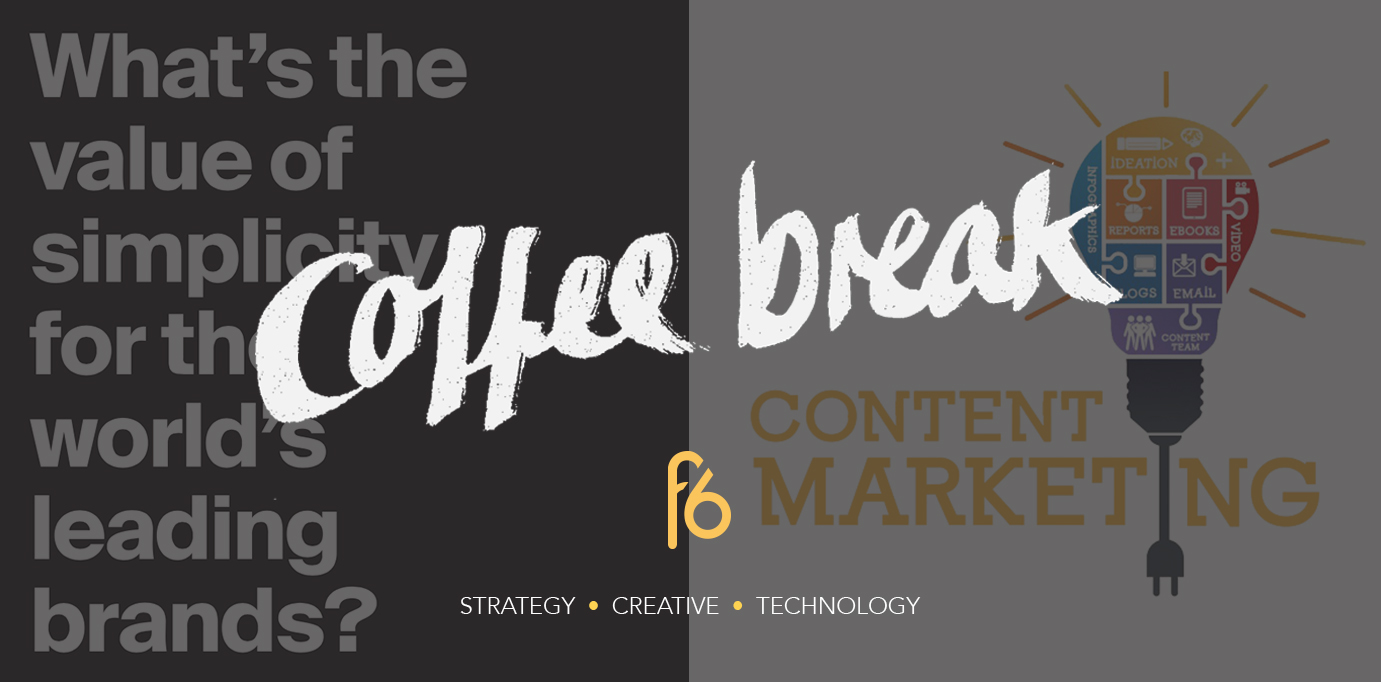This week, we’re getting back to basics, asking what the value is for brands in keeping things simple, and why starting with your metrics might be the most important thing to do in B2B content marketing
Sian, Creative Strategist
Why brands who KISS do better
We’re all pretty familiar with the acronym keep it simple stupid. It tells us that most things work better when they’re kept simple. From writing essays to building an aircraft, there’s the idea that unless our readers or mechanics are actively seeking out a complex experience, they’ll generally prefer to understand concepts or complete tasks as quickly and as painlessly as possible. We don’t enjoy things that are hard to do when we know they could be easy.
You’d therefore expect consumers to like brands who simplify everything, from their marketing communications to their services and products. “Cool,” you might say, “but it’s pretty obvious that people like Google because it’s simple”. But what’s most interesting, is when you look at the value from the perspective of the business–those who simplify are not only prefered by consumers, but also drive incredible business results compared to their complex counterparts.
Every year Siegel+Gale conduct a global survey on the value of brand simplicity that asked 14,0000 consumers to rate their experience of 875 brands. In defining simplicity as clear, human, and useful, the key findings show that companies who build their brands around simplicity and clarity command more attention and drive business results:
Simplicity performs:
- The simplest global brands outperform major indexes by 433%
Simplicity builds loyalty:
- 64% of consumers are willing to pay more for simpler experiences
Simplicity earns a premium:
- 64% of consumers are willing to pay more for simpler experiences
Complexity costs:
- Brands leave $86 billion on the table when they don’t simplify
So, what brands topped the list, and which need to go back to basics?
Aldi was crowned champion for the fourth year running for it’s consistency across stores and exclusive products that eliminate the need to choose from many brands and prices. Google followed in second for it’s intuitive functionality, Netflix in third for eradicating channel hopping by delivering a personalised experience, and Ikea in fourth for cutting out the middleman in its range of one stop shop minimal products. Amazon landed in fifth for getting the least number of clicks down to an art, with it’s two click shopping process–or one click with Amazon Dash buttons for those who can’t fathom two.
Many of the brands at the bottom where hung for their lack of transparency, drawn for their complex communications, and quartered for bad in store experiences. Aviva was criticised for hidden conditions in contracts in an industry where users are seeking peace of mind, while Linkedin was attacked for it’s complicated interface with too many features.
You can read more about the importance of competing on customer experience here.
Candice, Managing Director
What’s in B2B content marketing anyway?
It might seem simple, but it’s not too late to evaluate your existing KPI’s and see what B2B content marketing metrics you should be focusing on in 2017.
Firstly, look at your website
Your content marketing strategy should start with the key focus on what your site is doing. Your website is the face of your business and needs to be working harder and smarter for you. You need to assess your website analytics and gather who your returning and unique visitors are, to indicate the actual traffic you are gaining through the content that you are pushing out.
Do you have a high bounce rate and what is the average time being spent on your site? If you have a high bounce rate or visitors are not spending an average time on the site, then your visitors are indicating that they are not interested enough to explore more, and therefore this will lead to lower conversion rates.
Email marketing campaigns
Email is still the key element of B2B marketing, bringing in conversions and adding value across the customer lifecycle.
When promoting your products and services, are you striking the right chord? What analytics are you receiving through your email marketing campaigns that you send out? It’s not just the open rates that you need to monitor, but the actual click throughs that indicate what content your target audience is interested in. Evaluate your click through rates to increase those all important call to actions and conversion rates to your site or landing page.
Social Media campaigns
Reports show that B2B marketing has increasingly recognised that social media is an essential platform for initiating relationships with new business.
Which social media platforms are you using? Is your content strategy targeting the right audience from one platform to the other? Whether it’s organic or paid methods of content promotion, you need to analyse which content gathers higher engagement. Measuring the engagement shows that your target audience is interested in the content and feel the need be involved in it.
Keeping track of your metrics is extremely useful when trying to understand the most effective types of content you are pushing out and will help measure your marketing efforts. More importantly this will help measure your conversion rates that convert your leads into sales.




